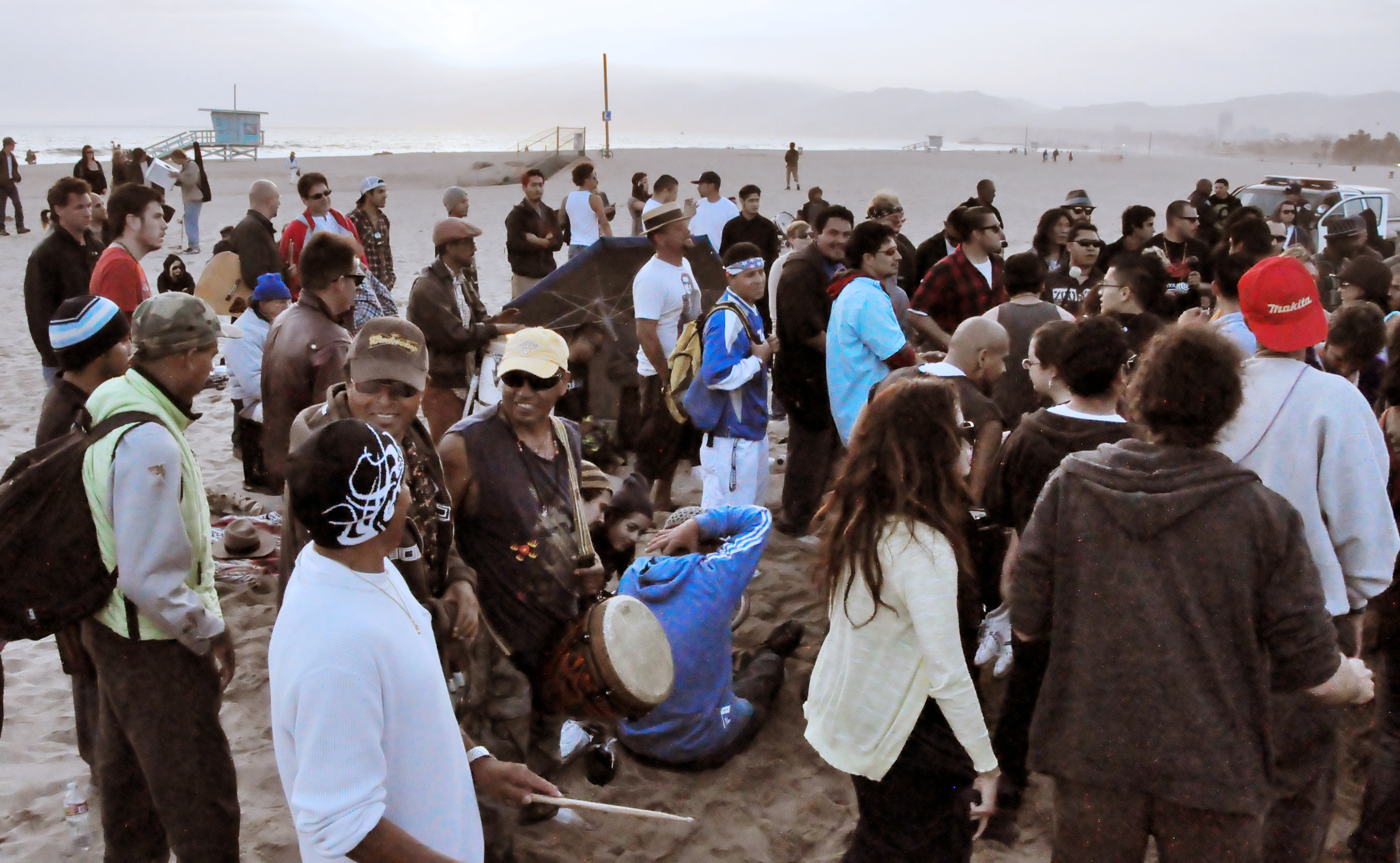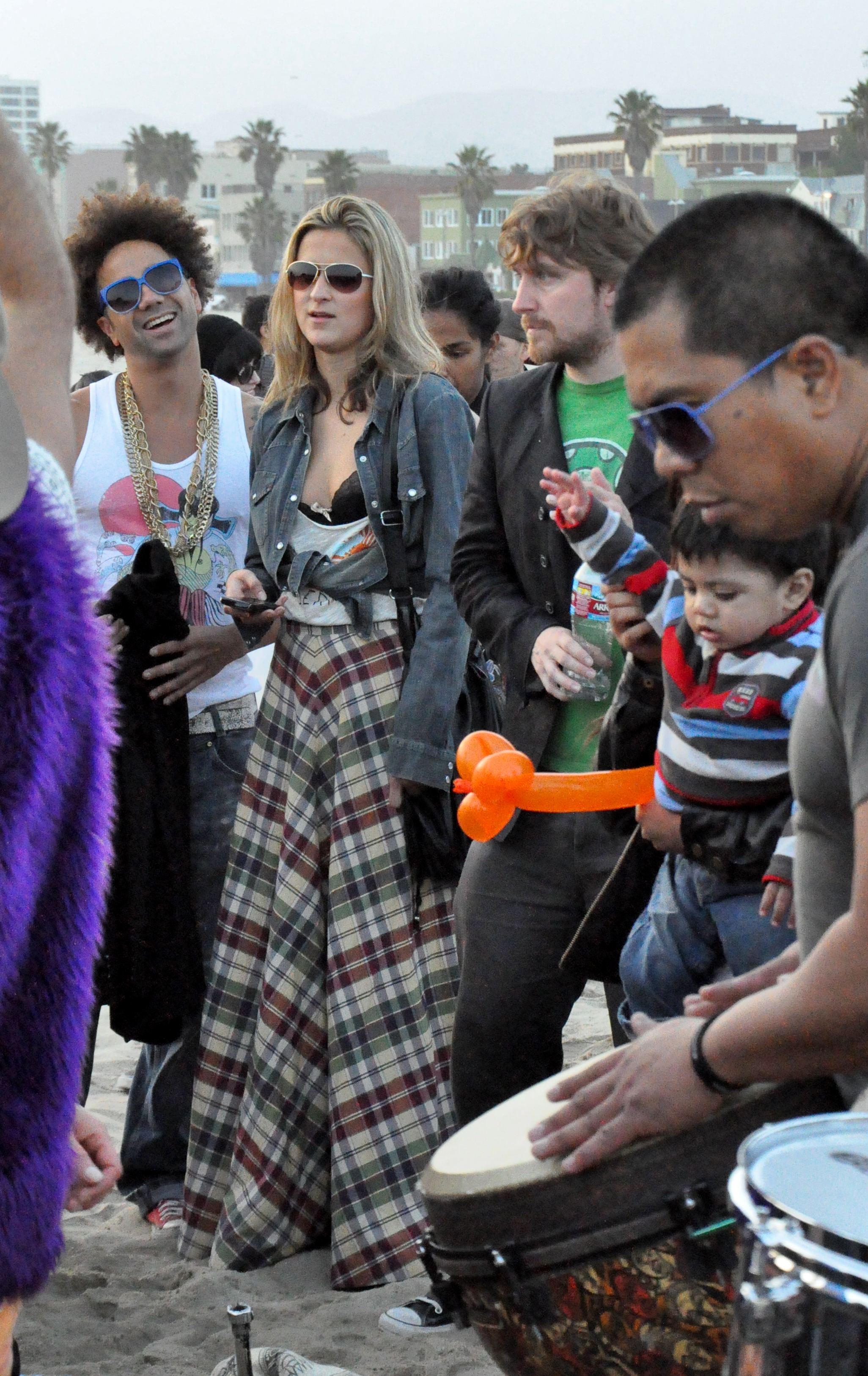
A crowd grows around the Sunday drum circle at Venice Beach where locals and visitors meet up for an evening of music and dance.
courtesy of ALEXANDER GALLAGHER–SOLTES
From the cardigan-clad woman ceremoniously dancing around the citation ticket she set on fire to the man in the tiki mask playing the bongos, it seemed that the wild spirit of the Venice Beach Drum Circle remains unbroken despite the prevalence of security.
It is this untamed, feral energy, along with the magnitude and diversity of the individuals emitting it, that attracts people to the Venice drum circle. But its essence can never really be captured, because it constantly changes with the participants.
Second-year theater student Tommy Schulz said the drum circle releases Los Angelenos from feeling the media pressure to be someone other than who they are. In the drum circle, whether you’re drumming, dancing, drinking or just deconstructing, you are doing so with intent, confronted with the raw neurological impulse to make and appreciate music.
On Sunday, the usual anatomy of the circle had dancers in the center surrounded by a halo of drummers and a scattered group of timid spectators. There were tourists in tennis shoes and barefooted hippies, smiling toddlers and bald old men.
Like the participants themselves, the drums vary in shape, size and origin, from pieces of drum kits brought from home to trash cans and bottles found right there on the beach. Schulz said he bought his djembe drum from Wooden Roots in Thousand Oaks for its bassy sound and plain, organic look.
Schulz said the djembe has three spirits ““ those of the animal in the skin, the tree in the hardwood and the human in the craftsman. To get more in tune with his instrument, Schulz said he brought it to a mountaintop to play.
The beach also provides a spiritual spot for musicians to connect with their instruments and other people. Working with another to create one sound, a dabbling djembe player would mimic the rhythmic pattern of a skilled snare drummer in a call-and-response sequence that eventually integrates into one another. The musicians drum different rhythms to the same tempo.
The circle is like one living, breathing organism that somehow knows when to speed up and when to slow down, when to start and when to stop. Perhaps this hippie-like magic is what keeps the tourists snapping pictures and the red-eyed boys’ jaws from closing.
It might also be the taste of salt in the mouth, the smell of herbs in the nostrils and the feel of sand between the toes. Coupled with the sound of drums in the ears that is felt throughout the entire body, drum circle participants must feel a sweeping sensory stimulation fitting of the last celebration of the weekend before the work week, their troubles trivialized by the immensity of the sea.
The collective beat of the circle is held down by a handful of loud and confident drummers. While the energy of the drum circle dies down at times, there are always a few dedicated musicians who keep the hippies dancing.
Walking back down the streets of Venice, the stores capitalize on sensory overload as passersby are subjected to top 40 music bleeding into Native American flute songs and the usual renditions of Leonard Cohen’s “Hallelujah” by various scruffy-looking street musicians. The sounds of the drum circle can still be heard in the distance.
The drum circle, like many things such as college and life itself, is meant to be left after a while. Rest assured that new spectators and participants will take your place, like shifting pillars that hold up the old structure for new wanderers to enjoy. Long after the music’s stopped or you’ve left the circle, the beat goes on. At least until the cops arrive.
